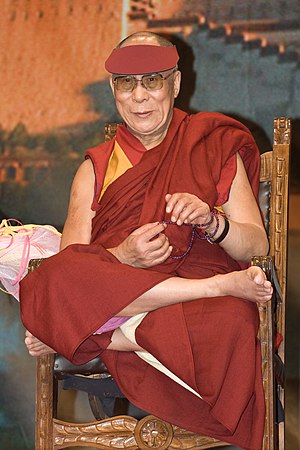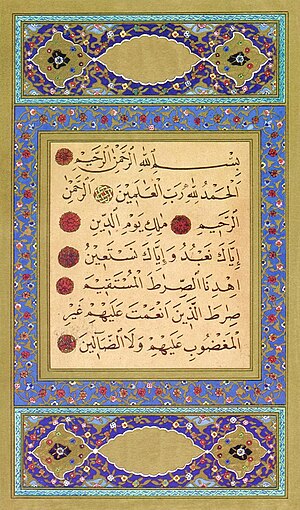 Image via Wikipedia
Fresh explosion rocks Japanese nuclear plant...
Image via Wikipedia
Fresh explosion rocks Japanese nuclear plant...
FUKUSHIMA,
Japan (Reuters) – A fresh explosion rocked a damaged Japanese
nuclear power plant on Tuesday where engineers have been pumping sea water into a reactor to prevent a catastrophic meltdown in the wake of a devastating earthquake and tsunami.
Japan's nuclear safety agency said Tuesday's explosion at the plant's No.2 reactor was caused by hydrogen. There was no immediate word on damage, but Jiji news agency quoted the trade ministry as saying radiation levels remained low after the blast, the third at the plant since Saturday.
Japan has asked the
United States for more equipment to help cool reactors at the Fukushima nuclear complex, which was hit on Monday by a dangerous drop in cooling water levels that exposed fuel rods in the No. 2 reactor.
The full extent of the destruction wreaked by Friday's massive quake and tsunami that followed it was still becoming clear, as rescuers combed through the region north of Tokyo where officials say at least 10,000 people were killed.
"It's a scene from hell, absolutely nightmarish," said Patrick Fuller of the International Red Cross Federation from the northeastern coastal town of Otsuchi.
Prime Minister Naoto Kan said Japan was facing its worst crisis since World War Two and, with the financial costs estimated at up to $180 billion, analysts said it could tip the world's third biggest economy back into recession.
The U.S. Geological Survey upgraded the quake to magnitude 9.0, from 8.9, making it the world's fourth most powerful since 1900.
Car makers, shipbuilders and technology companies worldwide scrambled for supplies after the disaster shut factories in Japan and disrupted the global manufacturing chain.
Japanese stocks were expected to fall further on Tuesday, after Nikkei futures traded in Chicago fell 6.15 percent to be 70 points below the Osaka close.
Tokyo's TOPIX index closed down more than 7.5 percent on Monday, wiping $287 billion off market capitalization in the biggest fall since the height of the global financial crisis in 2008. Insurers' shares fell for a second day in London and New York, as world stocks slid to a six-week low.
"NOT CHERNOBYL"
The fear at the Fukushima complex, 240 km (150 miles) north of Tokyo, is of a major radiation leak after the quake and tsunami knocked out cooling systems. The complex has seen explosions at two of its reactors on Saturday and Monday.
The worst nuclear accident since the
Chernobyl disaster in Ukraine in 1986 has drawn criticism that authorities were ill-prepared and revived debate in many countries about the safety of atomic power.
Switzerland put on hold some approvals for nuclear power plants and Germany said it was scrapping a plan to extend the life of its nuclear power stations. The White House said
U.S. President Barack Obama remained committed to nuclear energy.
Yukiya Amano, head of the
International Atomic Energy Agency, said the reactor vessels of nuclear power plants affected by the disaster remained intact.
"The nuclear plants have been shaken, flooded and cut off from electricity," he told a news conference. But "the reactor vessels have held and radioactive release is limited."
Amano, a veteran Japanese diplomatic, added that a Chernobyl-style disaster was "very unlikely."
An explosion at the Soviet
Chernobyl plant sent radioactive fallout across northern Europe.
Whilst the Fukuskima plant's No.1 and No.3 reactors both suffered partial fuel rod meltdowns, operator
Tokyo Electric Power Co (TEPCO) said the No. 2 reactor was now the biggest concern.
A sudden drop in cooling water levels when a pump ran out of fuel had fully exposed the fuel rods for a time, an official said. This could lead to the rods melting down and a possible radioactive leak.
TEPCO said it had resumed pumping sea water into the reactor early on Tuesday.
"This is nothing like a Chernobyl," said Murray Jennex, a nuclear expert at
San Diego State University. "At Chernobyl you had no containment structure -- when it blew, it blew everything straight out into the atmosphere."
Nonetheless, the government warned those still in the 20-km (13-mile) evacuation zone to stay indoors. TEPCO said 11 people had been injured in the blast.
U.S. warships and planes helping with relief efforts moved away from the coast temporarily because of low-level radiation. The
U.S. Seventh Fleet described the move as precautionary.
South Korea, Hong Kong, Singapore and the Philippines said they would test Japanese food imports for radiation.
France's ASN nuclear safety authority said the accident could be classified as a level 5 or 6 on the international scale of 1 to 7, putting it on a par with the 1979 U.S. Three Mile Island meltdown, higher than the Japanese authorities' rating.
Japan's nuclear safety agency has rated the incidents in the No.1 and No.3 reactors as a 4, but has not yet rated the No. 2 reactor.
TOWNS FLATTENED
About 850,000 households in the north were still without electricity in near-freezing weather, Tohuku Electric Power Co. said, and the government said at least 1.5 million households lack running water. Tens of thousands of people were missing.
"The situation here is just beyond belief, almost everything has been flattened," said the Red Cross's Fuller in Otsuchi, a town all but obliterated. "The government is saying that 9,500 people, more than half of the population, could have died and I do fear the worst."
Kyodo news agency reported that 2,000 bodies had been found on Monday in two coastal towns alone.
Whole villages and towns have been wiped off the map by Friday's wall of water, triggering an international humanitarian effort of epic proportions.
"When the tsunami struck, I was trying to evacuate people. I looked back, and then it was like the computer graphics scene I've seen from the movie Armageddon. I thought it was a dream . it was really like the end of the world," said Tsutomu Sato, 46, in Rikuzantakata, a town on the northeast coast.
In Tokyo, commuter trains shut down and trucks were unable to make deliveries as supermarket shelves ran empty.
Estimates of the economic impact are only now starting to emerge.
Hiromichi Shirakawa, chief economist for Japan at Credit Suisse, said in a note to clients that the economic loss will likely be around 14-15 trillion yen ($171-183 billion) just to the region hit by the quake and tsunami.
Even that would put it above the commonly accepted cost of the 1995 Kobe quake which killed 6,000 people.
The earthquake has forced many firms to suspend production and shares in some of Japan's biggest companies tumbled on Monday, with Toyota Corp dropping almost 8 percent.
Global companies from semiconductor makers to shipbuilders faced disruptions to operations after the quake and tsunami destroyed vital infrastructure, damaged ports and knocked out factories.
"The earthquake could have great implications on the global economic front," said Andre Bakhos, director of market analytics at Lec Securities in New York. "If you shut down Japan, there could be a global recession."
The Bank of Japan offered a combined 15 trillion yen ($183 billion) to the banking system earlier in the day to soothe market jitters.
(Additional reporting by Nathan Layne, Risa Maeda and Leika Kihara in Tokyo, Chris Meyers and Kim Kyung-hoon in Sendai, Fredrik Dahl and Michael Shields in Vienna, Noel Randewich in San Francisco and Miyoung Kim in Seoul; Writing by Alex Richardson)
Acknowledgements: Yahoo News
 Image via WikipediaThe problem of China stealing U.S miltary secrets...
Image via WikipediaThe problem of China stealing U.S miltary secrets...





